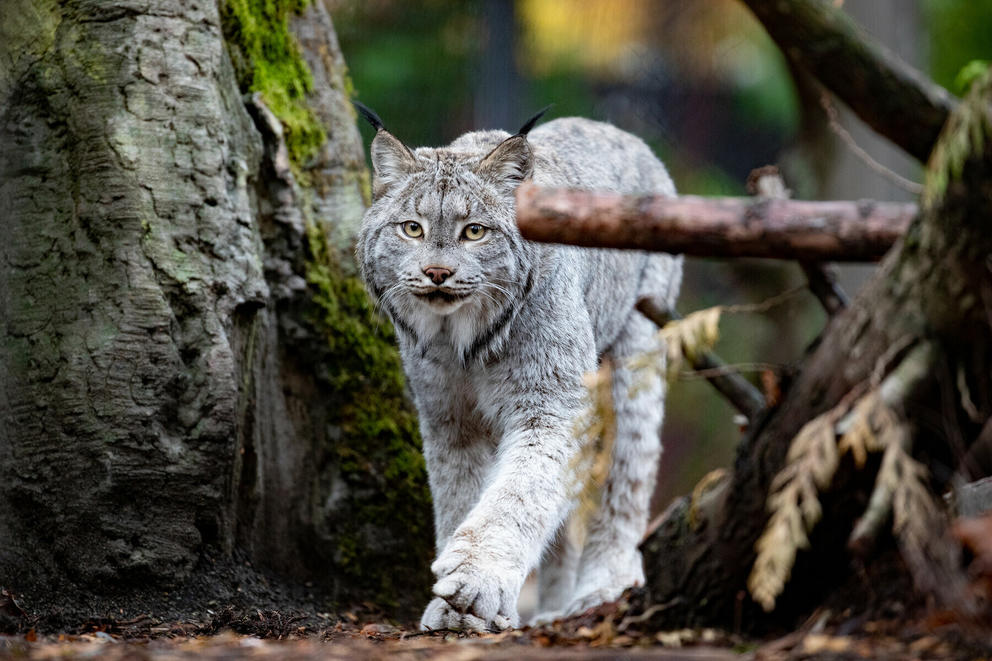Sponsored Content
North Cascades wildlife threatened by climate change, shrinking snowpack
Spring has arrived in the Pacific Northwest, but it looks different in the mountains than it once did. Normally, mountain snow reaches its peak at this time of year, but climate change has put the formerly reliable snowpack in jeopardy, along with the wildlife that depend on it.
Wildlife require a predictable snowpack—the snow and ice that accumulate at high altitudes—which typically follows a familiar cycle. Each year, a parade of storms and atmospheric rivers dump snow in Washington’s Olympic and Cascade mountains during the fall and winter. Peaking each spring and melting every summer, the snow cycle marches on like a beating heart, filling vein-like rivers with critical water supply to support the Northwest’s ecosystems and communities. When climate change disrupts this system, wildlife suffer.
Biologists are concerned about how reduced snowpack in the future will impact several animal species that live in the mountains, like Canada lynx, wolverines, and Pacific martens. In Washington, for example, endangered Canada lynx rely on healthy boreal forests and plentiful snowpack to hunt their prey.
Wolverines, too, need a robust snowpack to thrive. The carnivorous mammals began to recolonize the Washington Cascades in the 1990s after being extirpated by humans a century ago. Female wolverines require deep snowpack to persist into spring to keep their young kits warm and safe in maternal dens. That makes them highly vulnerable to a warming climate.
“As with lynx, predicted changes in climate will likely have negative effects on wolverine reproduction, distribution, competition and foraging ecology,” said Robert Long, PhD, senior conservation scientist at Woodland Park Zoo. “We are working with a broad team of collaborators to monitor how these at-risk populations are responding to climate change and other human impacts.”
One metric of climate change’s impact on the Northwest is the water year, which starts October 1, typically when the wet season begins north of the equator, and ends September 30 in the northern hemisphere. During this time period, climatologists and other scientists measure precipitation totals. Water year measurements include both rain and snowfall in the mountains, and recently, scientists have noticed trends showing more rain and less snow at high elevations. “If we look back in the historical record, we can see that human-induced climate change has reduced the snowpack here in the Northwest about 30% compared to the 1950s,” said Michael Case, a forest ecologist with environmental organization the Nature Conservancy.
More rain may seem like a good thing, but it doesn’t fill the critical—and irreplaceable—role of mountain snow to build up a snowpack that will slowly melt over the summer, supplying the Northwest’s rivers and streams through the dry season.
“We’ve adapted to and rely on this natural water reservoir in those dry months,” said Case. “So, without it, or even without as much of it, we’re vulnerable.”
Climate change and the impacts of a dwindling snowpack are also causing more intense and extensive wildfires, devastating habitat for species like wolverines, lynx and their prey.
There is hope that the worst impacts from climate change can be minimized if everyone does their part to help. Large-scale change by policy makers and corporations stands to make a major impact, and individuals can also take action by reducing their own environmental impacts. “Knowledge is really important if we want to change and understand what kind of impact we’re having. From what we eat to how we travel … Simply eating less meat like beef or flying less can make a big difference,” said Case.
Woodland Park Zoo and partners are currently studying both lynx and wolverines to help recover their populations in the Cascades. The zoo’s Living Northwest conservation program offers a number of opportunities for Washingtonians to connect with wildlife conservation. The program helps recover native wildlife populations, foster long-term ecological resilience, and empower ordinary citizens to become wildlife conservationists.
Mitigating the impact of climate change on mountain snowpack and the animals who rely on it will require efforts like these. “Climate change drives conditions like extended droughts and poor forest health, leading to an extraordinary increase in the severity of wildfires across Washington,” said Hilary Franz, commissioner of public lands with the Washington State Department of Natural Resources. “Fire seasons start earlier and end later, and no one—human or animal—is immune from the impacts of wildfire. We are seeing larger, more intense, and hotter fires in landscapes. But we’re taking action and I’m proud of the efforts to improve forest health before fire breaks out and our work to restore landscapes after the flames are put out. But we can’t do this alone—we need everyone working together to reduce this threat.”
About the author: Craig Newberry is the Public Relations Specialist at Woodland Park Zoo. He holds a B.A. in Communications from the University of West Florida and is completing a second B.S. in Geoscience from Mississippi State University.




